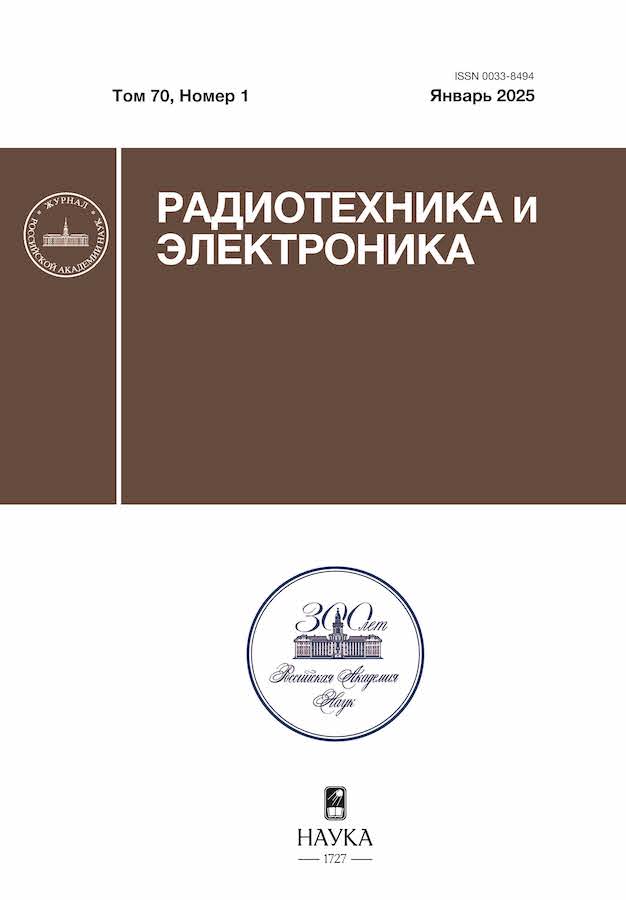Over-range polyconical antenna with gradient dielectric lens
- Авторлар: Kaloshin V.А.1, Nguyen The Т.2
-
Мекемелер:
- Kotel’nikov Institute of Radioengeneering and Electronics RAS
- Moscow Institute of Physics and Technology (National Research University)
- Шығарылым: Том 70, № 1 (2025)
- Беттер: 12-19
- Бөлім: АНТЕННО-ФИДЕРНЫЕ СИСТЕМЫ
- URL: https://aspvestnik.ru/0033-8494/article/view/684117
- DOI: https://doi.org/10.31857/S0033849425010025
- EDN: https://elibrary.ru/HJULRT
- ID: 684117
Дәйексөз келтіру
Аннотация
An omnidirectional in one plane polyconical antenna with a torroidal gradient dielectric anisotropic Mikaelian lens, which is made in the form of a set of parallel coaxial disks made of polystyrene of various thicknesses, is proposed and studied using numerical modeling. As a result of the study and optimization of parameters, it was shown that the optimized polyconical antenna with the lens is matched and provides high efficiency in the 40:1 frequency band. The results of numerical modeling are confirmed by the results of measurements of the manufactured antenna prototype.
Толық мәтін
Авторлар туралы
V. Kaloshin
Kotel’nikov Institute of Radioengeneering and Electronics RAS
Хат алмасуға жауапты Автор.
Email: vak@cplire.ru
Ресей, Mokhovaya St., 11, build. 7, Moscow, 125007
Тхань Nguyen The
Moscow Institute of Physics and Technology (National Research University)
Email: vak@cplire.ru
Ресей, Institutsky per. 9, Dolgoprudny, Moscow region, 141700
Әдебиет тізімі
- Kалошин В.А., Мартынов Е.С., Скородумова Е.А. // РЭ. 2011. Т. 56. № 9. С. 1094.
- Uskov G.K., Smuseva K.V., Seregina E.A., Bobreshov A.M. // 2022 IEEE8th All-Russian Microwave Conference (RMC). Moscow. 23–25 Nov. N.Y.: IEEE, 2022. P. 191.
- Titan Z., Sievert B., Eube M. et al. // 2022 52th Europ. Microwave Conf. (EuMC). Milan. 27–29 Sept. N.Y.: IEEE, 2022. P. 612.
- Zhang Z.-Y., Leung K.W., Lu K. // IEEE Trans. 2023. V. AP-71. № 1. P. 58.
- Dubrovka F.F., Piltyay S., Mоvchan M., Zakharchuk I. // IEEE Trans. 2023. AP-71. № 4. P. 2922.
- Kалошин В.А. // ДАН. 2016. Т. 470. № 2. С. 253.
- Pытов С.М. // ЖЭТФ. 1955. Т. 2. № 3. С. 605.
Қосымша файлдар





















